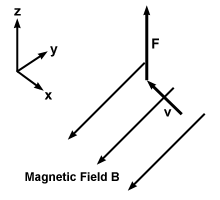Suggestions
Use up and down arrows to review and enter to select.Please wait while we process your payment
If you don't see it, please check your spam folder. Sometimes it can end up there.
If you don't see it, please check your spam folder. Sometimes it can end up there.
Please wait while we process your payment

By signing up you agree to our terms and privacy policy.
Don’t have an account? Subscribe now
Create Your Account
Sign up for your FREE 7-day trial
Already have an account? Log in
Your Email
Choose Your Plan
Individual
Group Discount
Save over 50% with a SparkNotes PLUS Annual Plan!
 payment page
payment page
Purchasing SparkNotes PLUS for a group?
Get Annual Plans at a discount when you buy 2 or more!
Price
$24.99 $18.74 /subscription + tax
Subtotal $37.48 + tax
Save 25% on 2-49 accounts
Save 30% on 50-99 accounts
Want 100 or more? Contact us for a customized plan.
 payment page
payment page
Your Plan
Payment Details
Payment Summary
SparkNotes Plus
You'll be billed after your free trial ends.
7-Day Free Trial
Not Applicable
Renews April 26, 2024 April 19, 2024
Discounts (applied to next billing)
DUE NOW
US $0.00
SNPLUSROCKS20 | 20% Discount
This is not a valid promo code.
Discount Code (one code per order)
SparkNotes PLUS Annual Plan - Group Discount
Qty: 00
SparkNotes Plus subscription is $4.99/month or $24.99/year as selected above. The free trial period is the first 7 days of your subscription. TO CANCEL YOUR SUBSCRIPTION AND AVOID BEING CHARGED, YOU MUST CANCEL BEFORE THE END OF THE FREE TRIAL PERIOD. You may cancel your subscription on your Subscription and Billing page or contact Customer Support at custserv@bn.com. Your subscription will continue automatically once the free trial period is over. Free trial is available to new customers only.
Choose Your Plan
For the next 7 days, you'll have access to awesome PLUS stuff like AP English test prep, No Fear Shakespeare translations and audio, a note-taking tool, personalized dashboard, & much more!
You’ve successfully purchased a group discount. Your group members can use the joining link below to redeem their group membership. You'll also receive an email with the link.
Members will be prompted to log in or create an account to redeem their group membership.
Thanks for creating a SparkNotes account! Continue to start your free trial.
We're sorry, we could not create your account. SparkNotes PLUS is not available in your country. See what countries we’re in.
There was an error creating your account. Please check your payment details and try again.
Please wait while we process your payment

Your PLUS subscription has expired
Please wait while we process your payment
Please wait while we process your payment

With a brief history of electromagnetism, and a general understanding of what conditions give rise to a magnetic field, we may now precisely define the magnetic field.
When we defined the electric field, we first established the electric charge, and related the interaction of electric charges through Coulomb's Law. Unfortunately we cannot do the same for magnetic fields, because magnetic charges do not exist. Whereas electric fields originate from a single point charge, magnetic fields come from a wide variety of sources: currents in wires of varying shapes or forms, permanent magnets, etc. Instead of beginning with a description of the field created by each of these examples, we must define the magnetic field in terms of the force exerted by the field on a moving point charge.
Consider a point charge q moving with a velocity v that is perpendicular to the
direction of the magnetic field, as shown below.

In this very simple case, the force felt by the positive point charge has magnitude
F =  |
Take your right hand (it is important not to use the left one), and stick your thumb, your index finger and your middle finger in mutually perpendicular directions. Each one of these fingers represents a vector quantity: the thumb points in the direction of the velocity of the positively charged particle, the index finger points in the direction of the magnetic field, and the middle finger points in the direction of the force felt by the moving charge. Try it out on the above figure: point your thumb in the negative x direction and your index finger in the negative y direction. Hopefully you will find that your middle finger points in the positive z direction, which is exactly the direction of the force. This is known as the first right hand rule.
We disucussed the special case in which the moving charge moves perpendicular to the magnetic field. This perfectly perpendicular situation is uncommon. In more normal circumstances the magnetic force is proportional to the component of the velocity that acts in the perpendicular direction. If a charge moves with a velocity at an angle θ to the magnetic field, the force on that particle is defined as:
F =  |
forceequation*
 = =  |
Please wait while we process your payment

